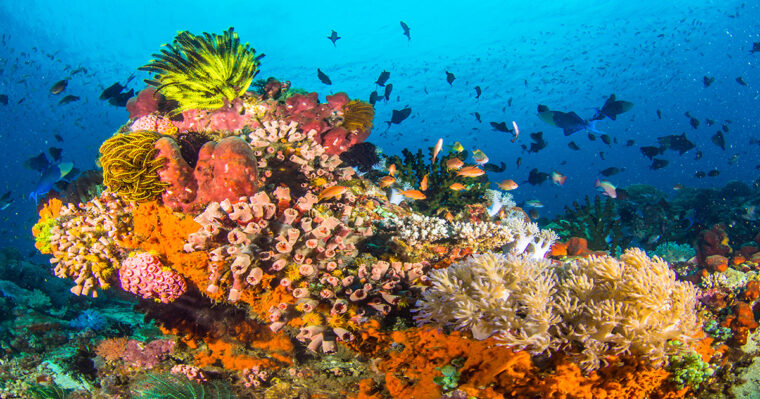Coral reefs are structures that are formed by coral larvae that attach themselves to rock and other hard surfaces found along the edges of islands and continents underwater. In order for a coral reef to form, millions of coral polyps collect together in waters that have an average temperature of 21 degrees centigrade. Corals generally grow very slowly, and for this reason, entire reefs grow at a rate of around only 1-2 cm each year.
As coral reefs prefer warm water, they are most commonly found in the tropical parts of the Indian and Pacific Ocean, West Indian Islands, and the Red Sea. The most well-known and impressive reef is probably the Great Barrier Reef, located off the northeast shores of Australia and measuring at 2300 km long. According to their location and distance from shore, there are generally three different types of reefs; fringing reefs, barrier reefs and coral islands.
Fringing Reefs
Fringing reefs grow near the coastline around islands and continents. They are separated from the shore by narrow, shallow lagoons. Fringing reefs are the most common type of reef that we see.
Barrier Reefs
Barrier reefs are similar to fringing reefs in that they also border a shoreline; however, instead of growing directly out from the shore, they are separated from land by an expanse of water. This creates a lagoon of open, often deep water between the reef and the shore.
Coral Islands
Also called an atoll, a coral island is a ring-shaped coral reef, island, or series of islets. The atoll surrounds a body of water called a lagoon.
Coral reefs are incredibly important for the underwater ecosystem, they also offer an ideal place for fish to nest and also provide carbon offset under the sea. Today, global warming is known to be having a serious effect on their ecosystem. Scientists now say that 1 out of 5 coral reefs in the world is dangerously close to vanishing due to the increasing threat of the warming ocean waters. Consequently, coral reefs are in serious danger of going extinct within the time frame of around 20 to 40 years unless extreme precautionary measures are taken.

